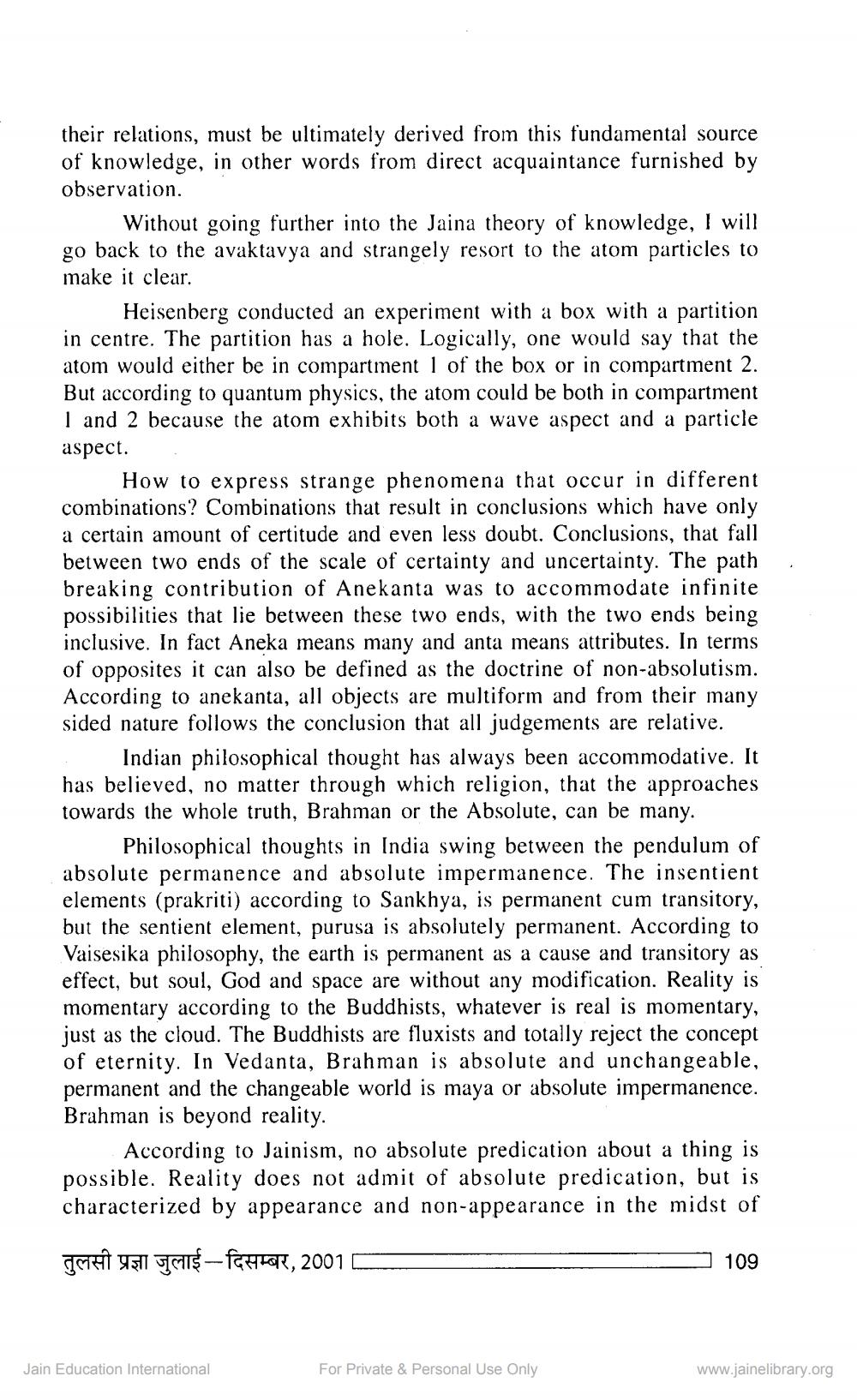________________
.
their relations, must be ultimately derived from this fundamental source of knowledge, in other words from direct acquaintance furnished by observation.
Without going further into the Jaina theory of knowledge, I will go back to the avaktavya and strangely resort to the atom particles to make it clear.
Heisenberg conducted an experiment with a box with a partition in centre. The partition has a hole. Logically, one would say that the atom would either be in compartment 1 of the box or in compartment 2. But according to quantum physics, the atom could be both in compartment 1 and 2 because the atom exhibits both a wave aspect and a particle aspect.
How to express strange phenomena that occur in different combinations? Combinations that result in conclusions which have only a certain amount of certitude and even less doubt. Conclusions, that fall between two ends of the scale of certainty and uncertainty. The path breaking contribution of Anekanta was to accommodate infinite possibilities that lie between these two ends, with the two ends being inclusive. In fact Aneka means many and anta means attributes. In terms of opposites it can also be defined as the doctrine of non-absolutism. According to anekanta, all objects are multiform and from their many sided nature follows the conclusion that all judgements are relative.
Indian philosophical thought has always been accommodative. It has believed, no matter through which religion, that the approaches towards the whole truth, Brahman or the Absolute, can be many.
Philosophical thoughts in India swing between the pendulum of absolute permanence and absolute impermanence. The insentient elements (prakriti) according to Sankhya, is permanent cum transitory, but the sentient element, purusa is absolutely permanent. According to Vaisesika philosophy, the earth is permanent as a cause and transitory as effect, but soul, God and space are without any modification. Reality is momentary according to the Buddhists, whatever is real is momentary, just as the cloud. The Buddhists are fluxists and totally reject the concept of eternity. In Vedanta, Brahman is absolute and unchangeable, permanent and the changeable world is maya or absolute impermanence. Brahman is beyond reality.
According to Jainism, no absolute predication about a thing is possible. Reality does not admit of absolute predication, but is characterized by appearance and non-appearance in the midst of
qort 9311 MS-f444to, 2001
109
Jain Education International
For Private & Personal Use Only
www.jainelibrary.org




